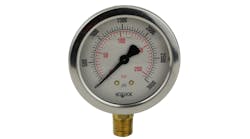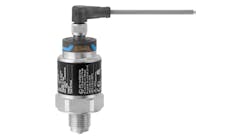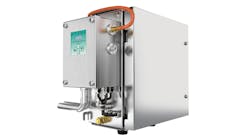Stan: The December issue was a pressure test for our readers. It posed the practical question of how to prevent the broken pressure gauges and spare parts budget that occur during construction from the tender loving care of instruments by pipe fitters.
Greg: I’ve been there. The formative years of my career were spent in the field in construction.
Stan: Hunter Vegas and Leroy Williams offered some practical considerations.
Hunter: Don't install pressure gauges until after the hydro tests are complete!
Leroy: The breakages can be stopped by installing them after all the piping has been installed and the bolts are fully torqued. This should be designated as a line item in the latter stages of the project.
Stan: We gave cases of gauges with different ranges to the operating supervisor. Then either during or after startup, if someone wanted a reading, an operator could take a new gauge out of the box, screw it into the required location and open the 1/2-in. block valve. The operating people could decide if they wanted to leave the gauge in that location permanently or return it to storage. They had more confidence in a newly installed gauge. We never purchased gauges and transmitters with 1/4-in. connections because they were more likely to be damaged than those with 1/2-in. connections.
Greg: Now for something completely different. The split personality of split-range valves has been on my mind. Nearly all systems with split-range valves oscillate around the split-range point. This leads to increased loop variability and the cross neutralization of reagents for acid and base valves, and wasted energy for steam and coolant valves. You can increase the split range gap, but this increases the loop dead time by the amount of time it takes the controller output to move through the gap when it truly needs to make a transition.
Stan: The installed characteristic of control valves at the split-range point is about as flat as Kansas. Also, friction near the seat translates to a dramatic increase in stick-slip. The result is a limit cycle regardless of tuning settings.
Greg: If you are just split-ranging different size valves, you might be able to get by with setting the split-range point to compensate for the change in valve size. However, operations and maintenance are accustomed to a split-range point of 50% and if the valves have different effects on the process (e.g., heating vs. cooling) or different injection points, the change in process gain, time constant, and dead time can be huge. The controller tuning settings need to be scheduled based on which valve is being throttled. Additionally, temperature loops often operate in the batch cycle where there is a constant set point and not much heat generation or loss. Integral action in the controller and the integrating response common in most batch processes will ensure the controller output will ramp through the split-range gap to open one of the valves, which tends to jump to a position that is much more than is needed.
Stan: The greatly reduced capacity of a trim valve can reduce the effect of stick slip and the loop might settle out at balanced condition for a very small flow.
Greg: Control strategies can be devised to simultaneously throttle coarse and trim control valves. Traditionally, this has been accomplished by integral-only valve position control of the big valve to keep the small valve in a desirable throttle range. The controller for the big valve is tuned for a very slow response to reduce interaction. A feedforward of feed flow and the pH set point is essential here to help speed up the response of the controller to load upsets and set point changes.
Stan: Alternatively, a proportional-only pH controller can be used to throttle the small valve and a separate PID pH controller to manipulate the big valve. The omission of integral action in the controller for the small valve helps suppress cycling from interaction.
Greg: The controller gain is inversely proportional to the valve gain so the controller gain for the big valve is smaller, which means the dead time for the controller output to make its way through the resolution and dead band of the big valve is greater. There is also the larger burst of flow from slip in the big valve. A model predictive controller (MPC) can be set up with a minimum move size to get through the big valve’s resolution and dead band and produce a counter move made by the smaller valve to account for slip. The MPC can be tuned through penalties on error for tight control while keeping the small valve in a good throttle range. These methods all suppose there are people to implement and maintain these strategies, which bring us to our “Top 10 List” from Bob Cameron and Glenn Mertz on how you can tell if your company has cut back too far.
Top 10 signs your company has downsized too much(10) Consultations with your self are the norm.
(9) It’s impossible to create a normal distribution of employee performances.
(8) None of your co-workers are employed by your company.
(7) The signatures on your “retirement” plant photo barely fill 25% of the border.
(6) The common reply to task requests is “Yeah, whatever.”
(5) The new corporate phone directory is distributed on a 3 x 5 notecard.
(4) The human resources department is a bulletin board in the lobby.
(3) You call in, request to be transferred to your bosses' secretary, and get forwarded to yourself.
(2) The "auditorium" for large corporate meetings is the cubicle next to you.
(1) Your retirement package is the box your personal belongings are in when you leave.
Why Did a PID Temperature Loop Overshoot The Setpoint?
Why did a PID temperature loop with a single steam jacket valve always overshoot the setpoint on the heat up of a batch? Send an e-mail with your answer to the CONTROL Puzzler.



